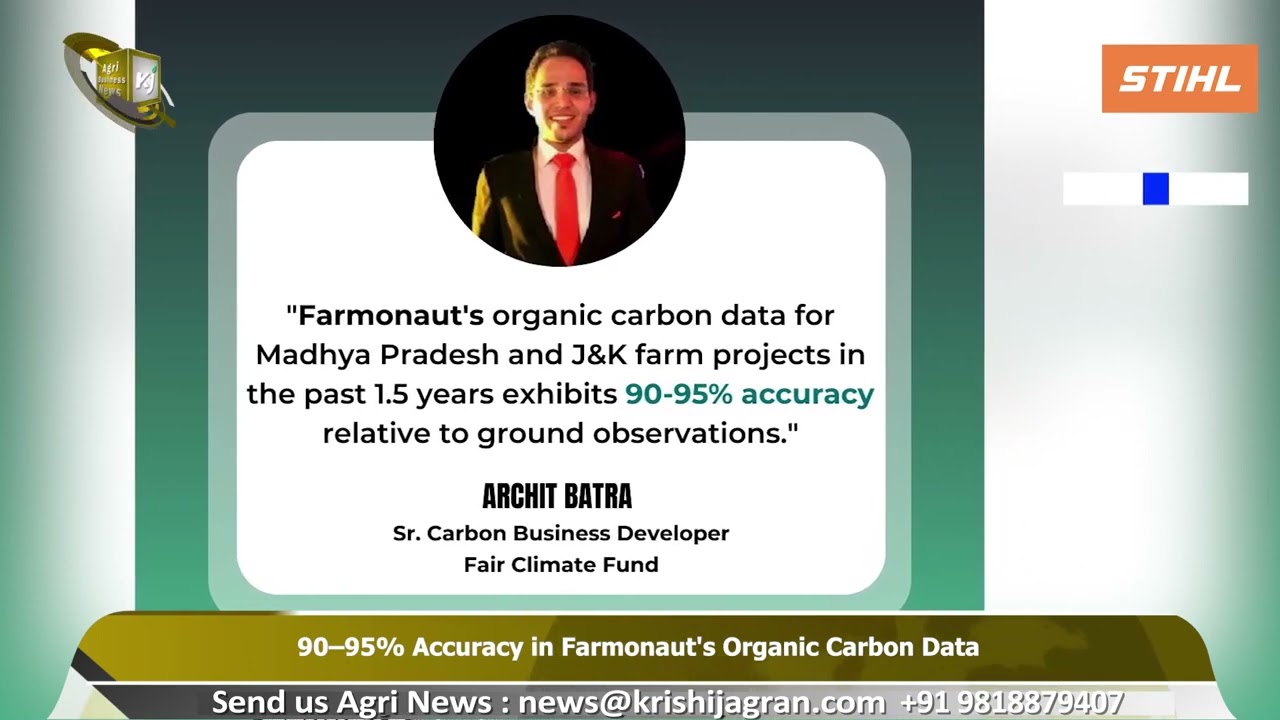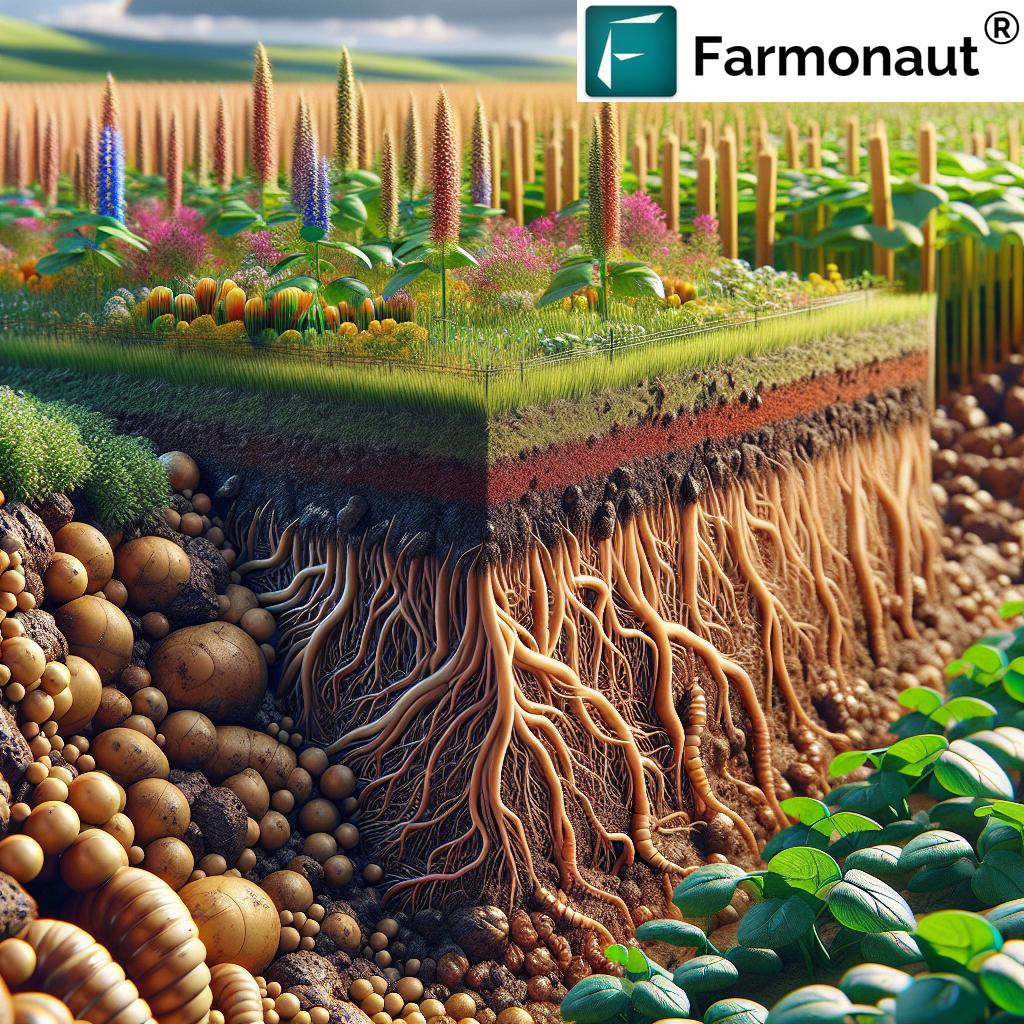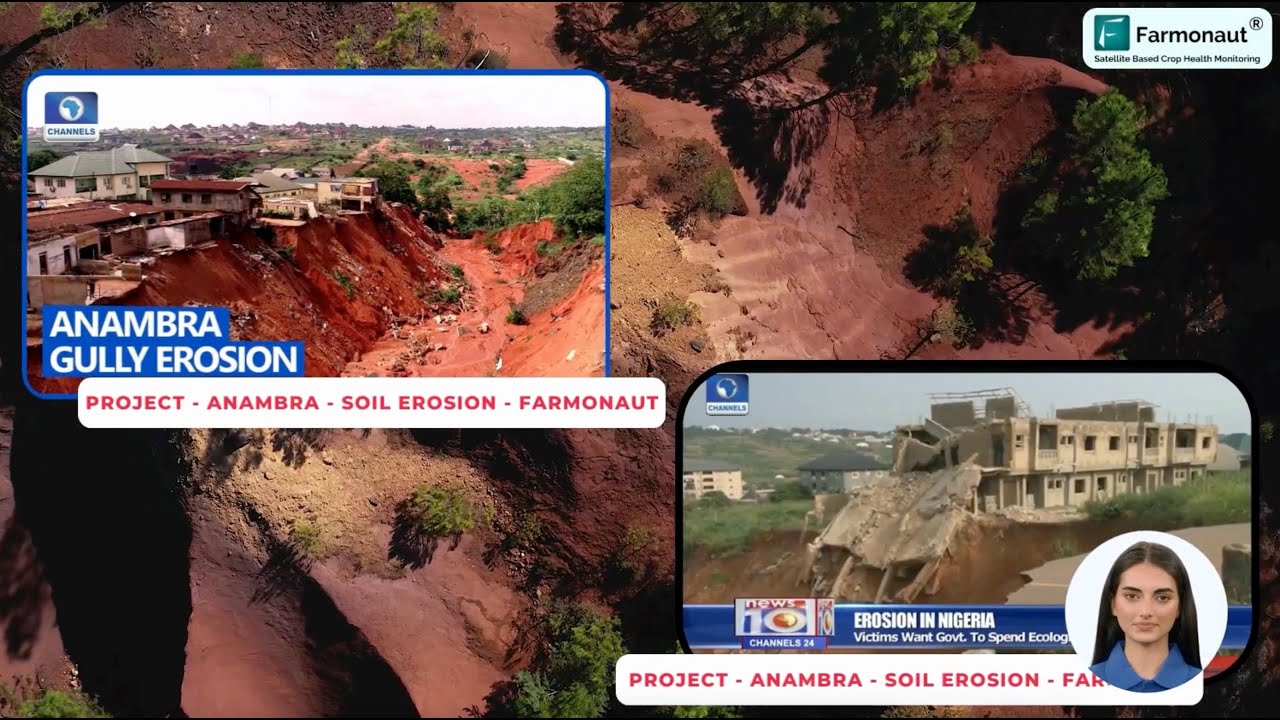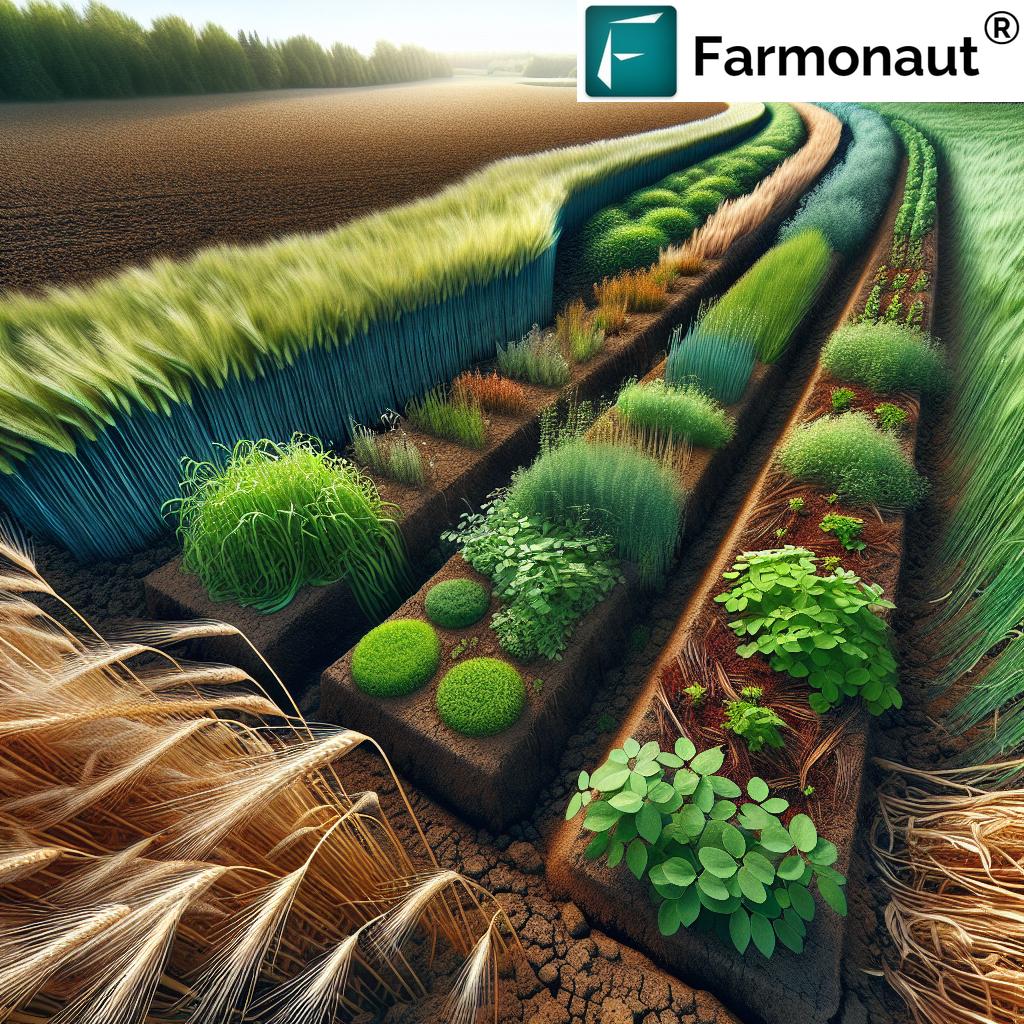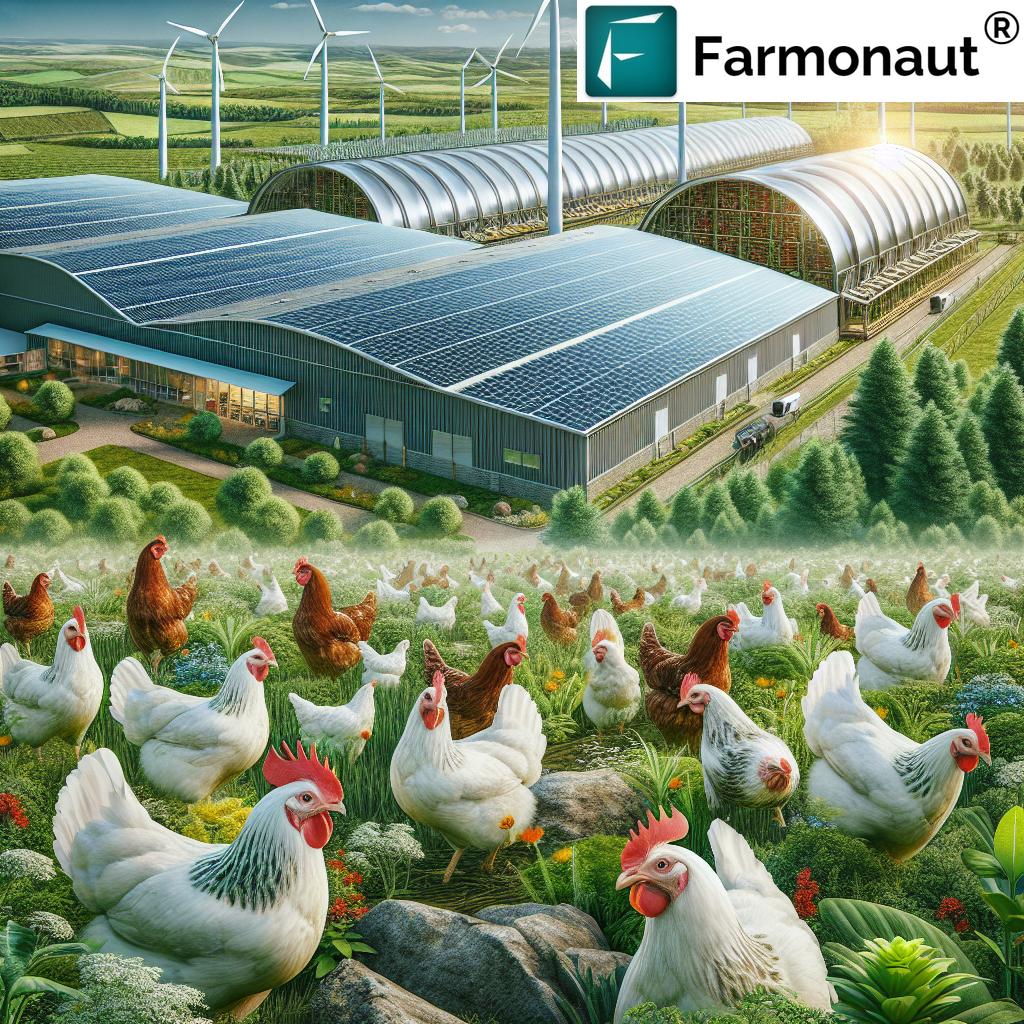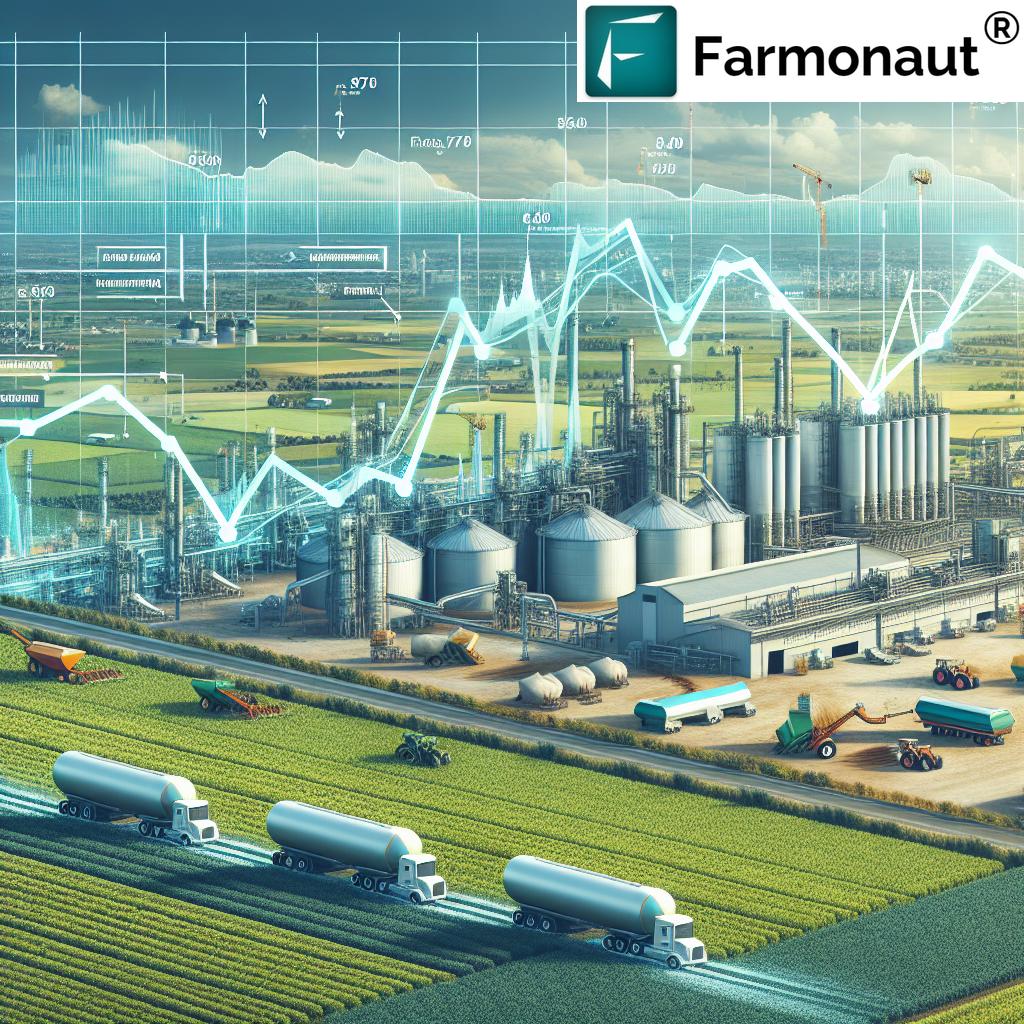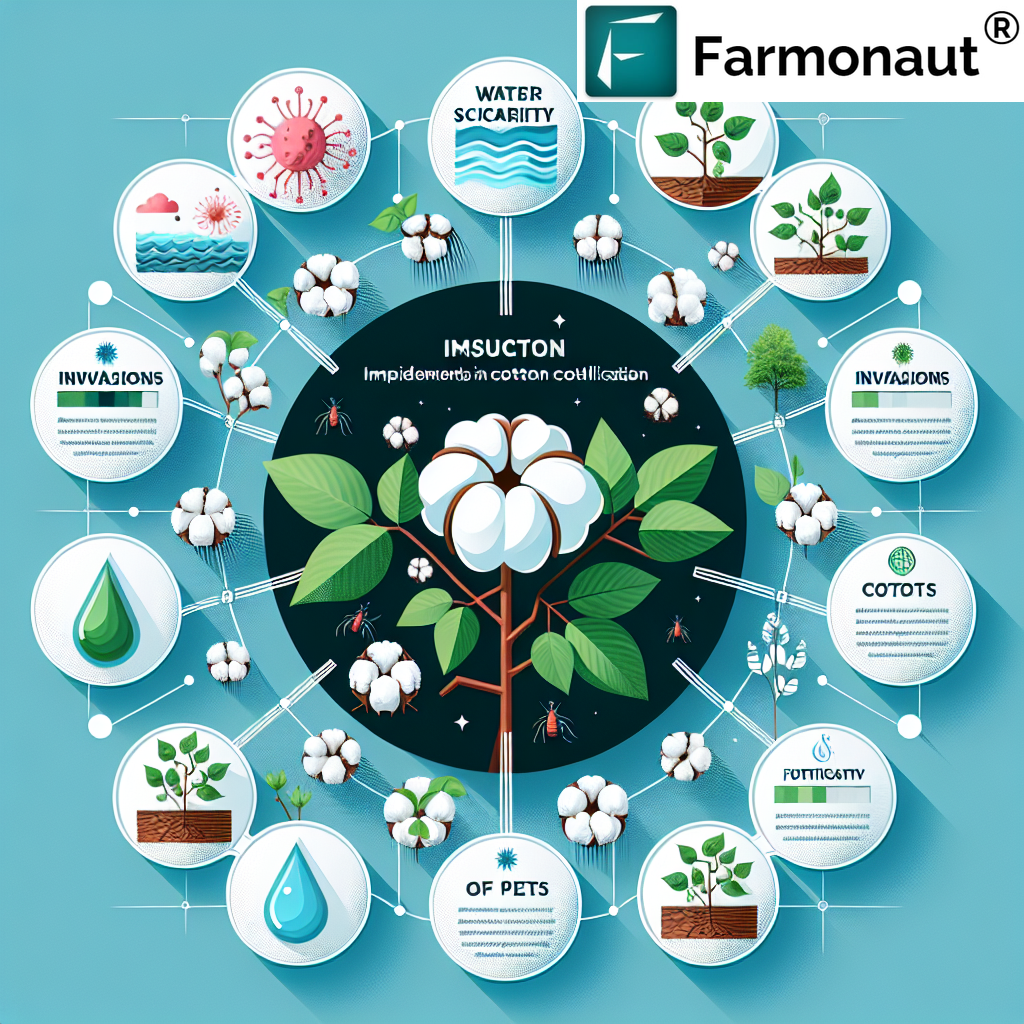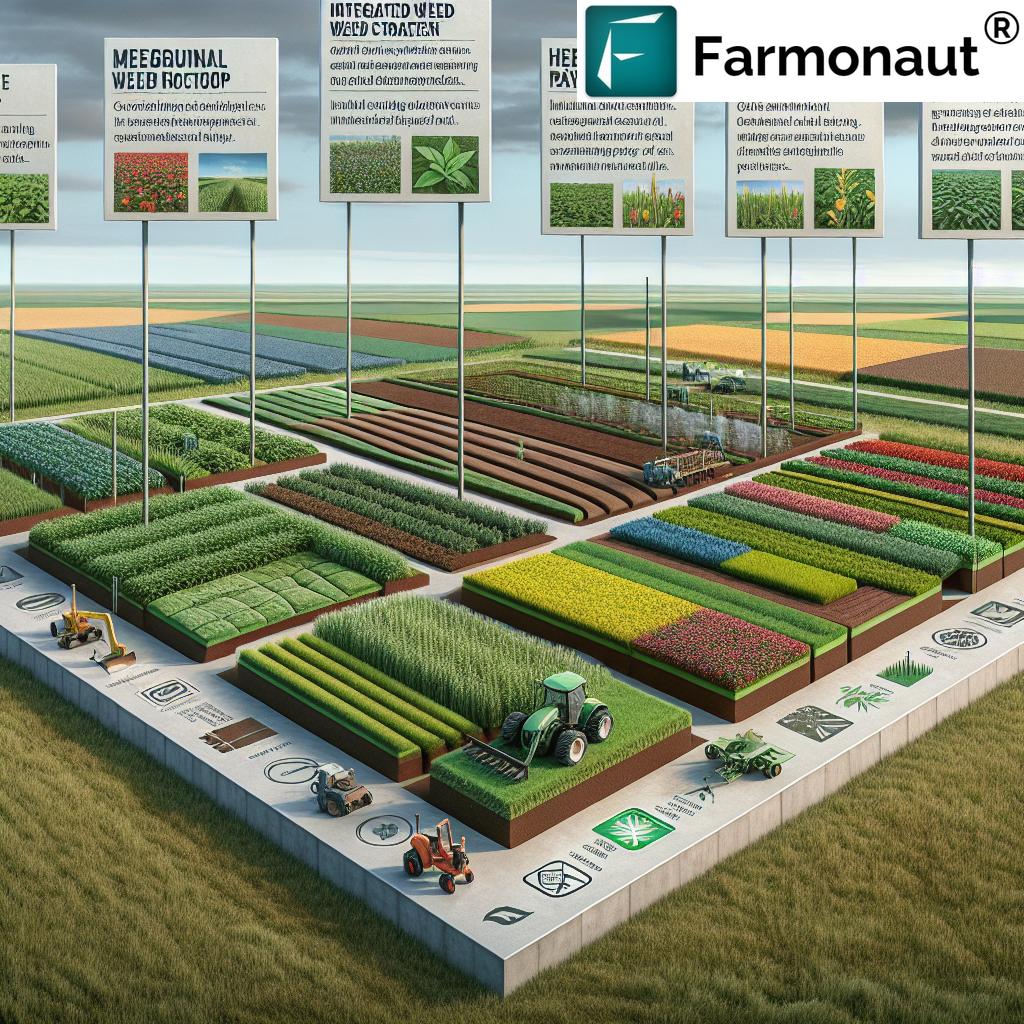Soil Management Secrets: 7 Tips Farmers Can’t Ignore!
“Healthy soil can increase crop yields by up to 58% compared to degraded soil, boosting farm productivity sustainably.”
Soil management is at the heart of sustainable agriculture, farming and forestry. By implementing the right soil management practices, we can not only maximize our crop yields and maintain ongoing productivity, but also enhance biodiversity, prevent erosion, and reduce our environmental impact. Whether we are growing staple crops, managing a forest, or working with integrated agroforestry systems, soil is our most precious resource.
In this comprehensive guide, we reveal 7 essential soil management tips that no farmer should overlook. We discuss practical steps for enhancing soil health, preserving fertility, minimizing disturbances, and adopting conservation techniques. Farmonaut—through precision technology, satellite monitoring, and data-driven insights—empowers us to make better soil management decisions, transitioning from traditional methods to modern, sustainable agriculture methods that support multiple generations.
Table of Contents
- Why Soil Management Matters
- Soil Management Secrets: 7 Essential Tips
- Key Principles of Soil Management
- Soil Conservation Techniques Every Farmer Should Know
- Addressing Soil Compaction and Structure
- Environmental Considerations in Soil Management
- Farmonaut’s Role in Advanced Soil Management
- Comparison: The 7 Soil Management Practices
- Farmonaut Subscription Pricing
- FAQs on Soil Management
- Conclusion: Building a Sustainable Future with Smart Soil Management
Why Soil Management Matters
Soil, often called “the foundation of life,” underpins our food, water, energy, and ecosystem services. Without healthy soil, crop yields plummet, land becomes less resilient to climate change, runoff pollutes waterways, and biodiversity declines. As farmers, landowners, and forestry professionals, it’s our responsibility to safeguard soil health. With sustainable soil management practices, we can reverse soil degradation, enhance fertility, and prevent erosion.
Traditional tillage and seedbed preparation methods, unless handled wisely, can disrupt soil structure, lead to organic matter loss, and trigger compaction. Modern practice moves us toward minimizing mechanical disturbance, strengthening soil cover, diversifying plant species, and integrating smart large-scale farm management tools. The transition to holistic soil management is both an opportunity and a necessity for every modern agricultural operation.
Soil Management Secrets: 7 Essential Tips Farmers Can’t Ignore!
Let’s explore the seven most impactful soil management practices that can transform the health and productivity of your farm, fields, or forest systems. We integrate scientific insight, practical experience, and precision agriculture via platforms like Farmonaut.
- Minimize Soil Disturbance: Reduce tillage and adopt low or no-till methods to protect soil structure, retain moisture, and support beneficial organisms.
- Maintain Continuous Soil Cover: Use cover crops, mulches, and crop residues to shield soil from erosion and enhance organic matter content.
- Diversify Plant Species: Practice crop rotation & intercropping, and integrate agroforestry systems to optimize soil nutrients and resilience.
- Implement Effective Soil Conservation Techniques: Employ contour plowing, terracing, buffer strips, and windbreaks to prevent soil erosion.
- Combat & Reduce Soil Compaction: Limit heavy machinery, especially on wet soils, and incorporate organic amendments to improve porosity.
- Optimize Nutrient Cycling with Organic Amendments: Apply compost, manure, and green manures to boost microbial health and nutrient cycling.
- Embrace Smart Technology and Data-Driven Soil Monitoring: Leverage platforms like Farmonaut for real-time monitoring of soil moisture, organic carbon, and overall soil health to guide decisions.
“Soil erosion causes global farmland to lose 24 billion tons of fertile soil annually—proper management is crucial!”
Key Principles of Soil Management for Sustainable Yields
Below, we explore the core principles behind successful soil management practices, including why minimizing disturbance, maintaining soil cover, and diversifying crops are essential for the long-term health of our soils and the viability of our farming and forestry operations.
1. Minimizing Soil Disturbance (No-Till & Low-Till)
- Traditional tillage and mechanical soil disturbance break up soil aggregates, exposing organic matter to rapid decomposition and erosion. These disturbances lead to reduced water infiltration, increased runoff, and a decline in soil integrity.
- By adopting no-till or low-till methods, we maintain soil structure, preserve pore space for water and air, and support beneficial soil microorganisms.
- Carbon footprinting solutions from Farmonaut enable us to track the climate and environmental benefits of minimizing mechanical disturbance.
2. Maintaining Continuous Soil Cover
- Exposed soil is highly vulnerable to wind and water erosion. Keeping soil covered with living plants, residues, or mulches shields the surface from rain impact and protects organic matter.
- Cover crops such as legumes not only provide a physical barrier but also fix atmospheric nitrogen, enriching soil fertility for subsequent crops.
- In agroforestry systems, integrating trees offers perennial cover, additional organic matter, and reduces water loss.
3. Diversifying Plant Species (Crop Rotation, Intercropping & Agroforestry)
- Continuous monocropping depletes specific nutrients and fosters pest and disease cycles. In contrast, rotating between crops with varying rooting depths and nutrient demands optimizes uptake and reduces depletion.
- Intercropping and introducing a variety of plant species improves soil structure, increases biodiversity, and disrupts pest cycles.
- Combining trees, crops, and sometimes livestock (key features of agroforestry systems) leads to enhanced biological, chemical, and physical properties of soils.
- Learn more about crop, plantation, and forest advisory for diversified systems on Farmonaut.
Soil Conservation Techniques Every Farmer Should Know
Soil conservation techniques are practical strategies to mitigate runoff, prevent soil erosion, and safeguard long-term soil productivity. Let’s look at the most effective methods for protecting our land.
Contour Plowing
- Plowing along the natural contours of sloped land significantly reduces water runoff and soil loss.
- This practice slows down the flow of rainwater, allowing more time for infiltration and reducing nutrient leaching into waterways.
Terracing
- For steep terrains, terracing transforms slopes into graduated, level steps. Each “step” minimizes water velocity, encourages infiltration, and prevents soil erosion.
- Terraces act as retention barriers, improving water management and supporting continuous crop cultivation on challenging landforms.
Agroforestry for Soil Conservation
- Integrating trees into our agricultural systems can produce a remarkable range of benefits, such as stabilizing soil, reducing wind and water erosion, and enhancing nutrient cycling.
- Trees serve as windbreaks, help maintain soil moisture, and provide ongoing organic matter input through leaf litter and root turnover, benefiting long-term soil health.
- Agroforestry supports maintaining soil biodiversity and offers extra income streams (timber, fruits, etc.).
- Buffer Strips: Planting grass, shrubs, or trees between fields and water bodies traps sediment and absorbs excess nutrients before they reach rivers or lakes.
- Windbreaks: Rows of trees or shrubs planted along field edges reduce wind speed, thus lowering wind erosion risk and creating microclimates for better crop growth.
- Mulching: Covering soil with organic material moderates temperature, retains moisture, and suppresses weed growth, all while adding organic matter.
Tip: Precision agriculture platforms like Farmonaut allow you to monitor soil health across your fields and optimize where to implement these conservation practices for maximum effect.
Addressing Soil Compaction and Structure for Enhanced Productivity
Soil compaction is a silent yield robber. It occurs when heavy machinery or livestock compresses soil, reducing pore space, water infiltration, root penetration, and overall biological activity. Here’s how we can recognize, prevent, and reverse soil compaction:
- Avoid Heavy Machinery When Soils Are Wet: Tires and implements exert far more pressure in moist conditions, leading to deeper, harder pans.
- Use Controlled Traffic Farming (CTF): Restrict vehicle movements to specific lanes to limit compaction to designated areas.
- Incorporate Organic Matter: Regular inputs of manure, compost, and green manures help restore soil structure, increase aggregate stability, and improve water infiltration.
- When Needed: Subsoiling/Deep Tillage: Deep rippers or subsoilers can break up compacted layers below the rooting zone only when absolutely necessary. Aim to minimize further disturbance after such interventions.
Did you know? Solutions like Farmonaut’s fleet management tools (see here) help you optimize machinery use, avoiding unnecessary soil compaction and improving soil and crop outcomes.
Environmental Considerations in Soil Management: Protecting Our Ecosystems
Effective soil management ripples outwards, affecting not just our own operations, but the wider community and natural world:
- Carbon Sequestration in Soil: Healthy soils capture and hold atmospheric carbon dioxide. Building organic matter through sustainable practices is a proven way to mitigate climate change, supported by monitoring tools such as Farmonaut’s carbon footprinting solutions.
- Maintaining Soil Biodiversity: The living web of bacteria, fungi, earthworms, and many microfauna is the engine for nutrient cycling, disease suppression, and overall soil fertility. Agroforestry systems maximize biodiversity below and above ground.
- Improved Water Quality: Erosion and runoff cause major water pollution. By maintaining ground cover, organic matter, and natural land features, we keep sediments and nutrients on the field and out of waterways, protecting aquatic biodiversity and drinking water quality.
Farmonaut’s Role in Advanced Soil Management Practices
Farmonaut stands at the frontier of precision agriculture technology. Our platform harnesses satellite imagery, AI-based analytics, and robust traceability features to empower farmers, foresters, and agribusinesses with actionable data. Here’s how Farmonaut can accelerate your journey to better soil:
- Satellite-Based Soil & Crop Health Monitoring: Farmonaut uses multi-spectral satellite imagery to deliver real-time insights on soil moisture, organic carbon, vegetation health (NDVI), and stress signals. This guides tailored interventions—for irrigation, fertilization, or pest control—optimizing soil and yield.
- Resource Management & Sustainable Planning: Track and manage all your resources—fertilizer, irrigation, and fleet—for maximum efficiency and minimum wastage, supporting healthier soils.
- AI-Based Advisory & Jeevn AI: Personalized advisory using field data and weather to forecast risks, recommend sustainable soil practices, and boost productivity at each step. Reduces guesswork and empowers evidence-based farming.
- Blockchain-Based Product Traceability: Build consumer trust and comply with export standards by verifying sustainable soil and crop practices via blockchain (see more).
- Carbon Footprinting: Monitor your environmental impact, including carbon sequestration progress, with Farmonaut’s integrated tools for carbon tracking and reporting (details here).
- Crop Loan & Insurance Facilitation: Expedite loan applications and insurance claims by providing field-verified soil and crop data to financial institutions, reducing barriers for sustainable farmers (learn more).
- API & Developer Tools: For agritech enterprises, integrate Farmonaut’s satellite data API and access developer docs for seamless data-driven soil management at scale.
- Real-Time Alerts: Get notified of potential soil threats—such as compaction, stress, excess moisture—before they become critical.
These technologies make implementing sustainable agriculture methods efficient, affordable, and scalable—from a single small farm to vast plantation estates or diverse forestry projects.
Soil Management Practice Comparison Table
Farmonaut Subscription Pricing
Start your journey to smarter soil management with one of Farmonaut’s cost-effective subscription plans. Choose the number of hectares, frequency of updates, and the services you need—all accessible via web or mobile apps. Scalable for all—from smallholder plots to large agricultural enterprises or government programs.
Frequently Asked Questions: Soil Management
1. What is soil management and why is it important?
Soil management involves a suite of practices designed to maintain and enhance soil health, structure, and fertility. Its importance lies in supporting sustainable yields, water quality, biodiversity, and ecosystem resilience for current and future generations.
2. How can no-till farming improve soil quality?
No-till farming minimizes mechanical disturbance, preserves organic matter, increases water infiltration, and maintains soil biological life. This prevents erosion and enhances yield potential over time.
3. Why are cover crops critical for soil conservation?
Cover crops protect the soil surface from erosion, fix atmospheric nitrogen (legumes), and add organic biomass. They reduce runoff, improve soil structure, and encourage biodiversity.
4. Can soil compaction be reversed?
With proper interventions – like organic amendments, controlled traffic farming, and, when necessary, careful deep tillage – soil compaction can be reversed for better root growth and water/nutrient uptake.
5. How does Farmonaut help in smart soil management?
Farmonaut leverages satellite monitoring, AI-based insights, and digital resource management to help you monitor soil moisture, organic carbon, and crop health in real-time. This leads to data-optimized soil management practices for improved yield, environmental quality, and profitability.
Conclusion: Building a Sustainable Future with Smart Soil Management
The health of our soils is the true legacy we leave for future generations. By adopting these seven soil management secrets—minimizing disturbance, continuous cover, diversity, conservation techniques, tackling compaction, organic amendments, and digital monitoring—we are investing not only in higher yields, but also in resilient ecosystems, cleaner water, greater biodiversity, and a healthy climate.
Combining traditional wisdom with 21st century precision agriculture tools like Farmonaut, we can make these methods practical, affordable, and precisely tailored to each field and crop. Whether you’re a smallholder, a plantation manager, or working in government and research, next-generation soil management is within your reach.
Don’t let degraded soils limit your farm’s potential. Protect your land, nurture your yields, and help restore the environment—one soil management decision at a time!







